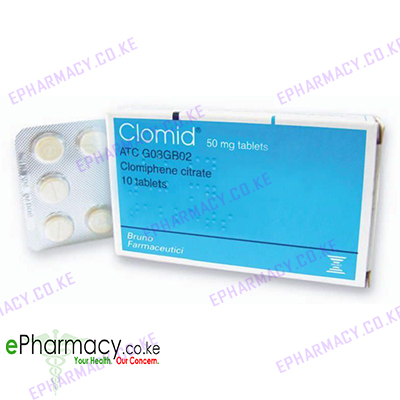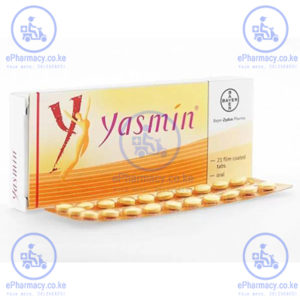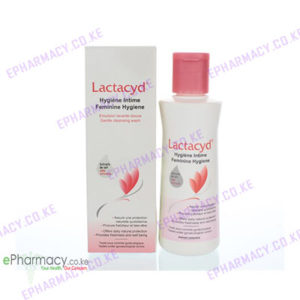Description
Uses and Administration
Clomifene is a nonsteroidal compound that has both oestrogenic and anti-oestrogenic properties, the latter residing principally in the E-isomer. Its action in stimulating ovulation is believed to be related to its anti-oestrogenic properties. It stimulates the secretion of pituitary gonadotrophic hormones, probably by blocking the negative feedback effect of oestrogens at receptor sites in the hypothalamus and pituitary.
Women should be examined for pregnancy and ovarian enlargement or cysts between treatment cycles. In general, 3 courses of therapy are adequate to assess whether ovulation is obtainable. If ovulation has not occurred, the diagnosis should be re-evaluated. Once ovulation is established, each treatment cycle of clomifene should be started on or about the 5th day of the menstrual cycle. If pregnancy has not occurred after a total of about 6 treatment cycles, some consider further clomifene therapy is not recommended as it might predispose the woman to ovarian cancer.
Carcinogenicity
There have been a number of reports suggesting an association between drug therapy to treat infertility by stimulating ovulation and the subsequent development of ovarian cancer. Concern has focused in particular on the use of clomifene citrate and gonadotrophins, and a study has reported an increased risk of ovarian cancer in women who had prolonged clomifene therapy (for one year or more) although not in those who received the drug for a shorter period.
No association between gonadotrophin therapy and ovarian cancer was noted in this study. The conclusions of this study were only tentative, since the numbers who developed ovarian cancer were small; it has been pointed out that a successfully achieved pregnancy may reduce the risk of some other cancers, and that the risks and benefits of the procedure are not easy to balance.7
A review8 of epidemiological and cohort studies concluded that clomifene was not associated with any increase in the risk of ovarian cancer when used for less than 12 cycles, but noted conflicting results, limitations of the data, and the need to control for infertility and nulliparity as risk factors for ovarian cancer. A further cohort study9 found no association between the use of clomifene and ovarian cancer. As a matter of prudence the UK CSM has recommended that clomifene should not normally be used for more than 6 cycles.10 However, the UK guidelines11 on the treatment of infertility considered that the limit of 6 cycles related to one course of treatment only. In practice many women required more than one course and it was considered that benefit may be derived from use of up to 12 cycles.
Adverse Effects
The incidence and severity of adverse effects of clomifene citrate tend to be related to the dose used. The most commonly reported adverse effects are reversible ovarian enlargement and cyst formation, vasomotor flushes resembling menopausal symptoms, and abdominal or pelvic discomfort or pain, sometimes with nausea or vomiting. Ovarian hyperstimulation syndrome has occurred. Breast tenderness, abnormal uterine bleeding, weight gain, headache, and endometriosis have also been reported.
Transient visual disturbances such as after-images and blurring of vision may occur, and there have been rare reports of cataracts and optic neuritis. Skin reactions such as allergic rashes and urticaria have occasionally been reported and reversible hair loss has been reported rarely. CNS disturbances have included convulsions, dizziness, lightheadedness, nervous tension, fatigue, vertigo, insomnia, and depression. Abnormalities in liver function tests and jaundice have sometimes been reported.
There is an increased risk of multiple births with clomifene therapy, but rarely more than twins. There is also an increased risk of ectopic pregnancy. Although there have been reports of congenital disorders such as neural tube defects or Down’s syndrome in infants born to women treated with clomifene the role of the drug in the causation of these defects has not been established and the incidence is reported to be similar to that for the general population.
Clomifene has also been used with gonadotrophins and in in-vitro fertilisation programmes.
Clomifene has also been used in the treatment of male infertility due to oligospermia to stimulate gonadotrophin release and enhance spermatogenesis, but there is limited convincing evidence of benefit.






Reviews
There are no reviews yet.